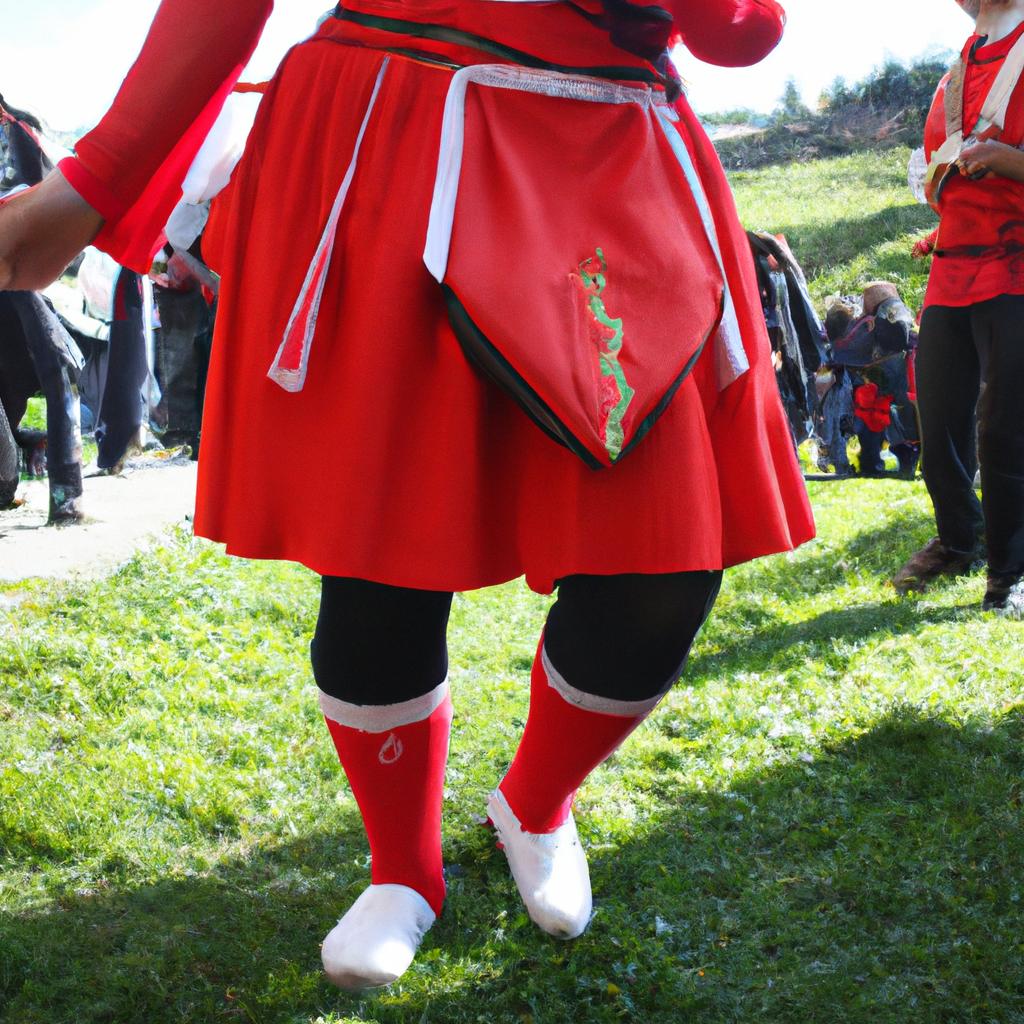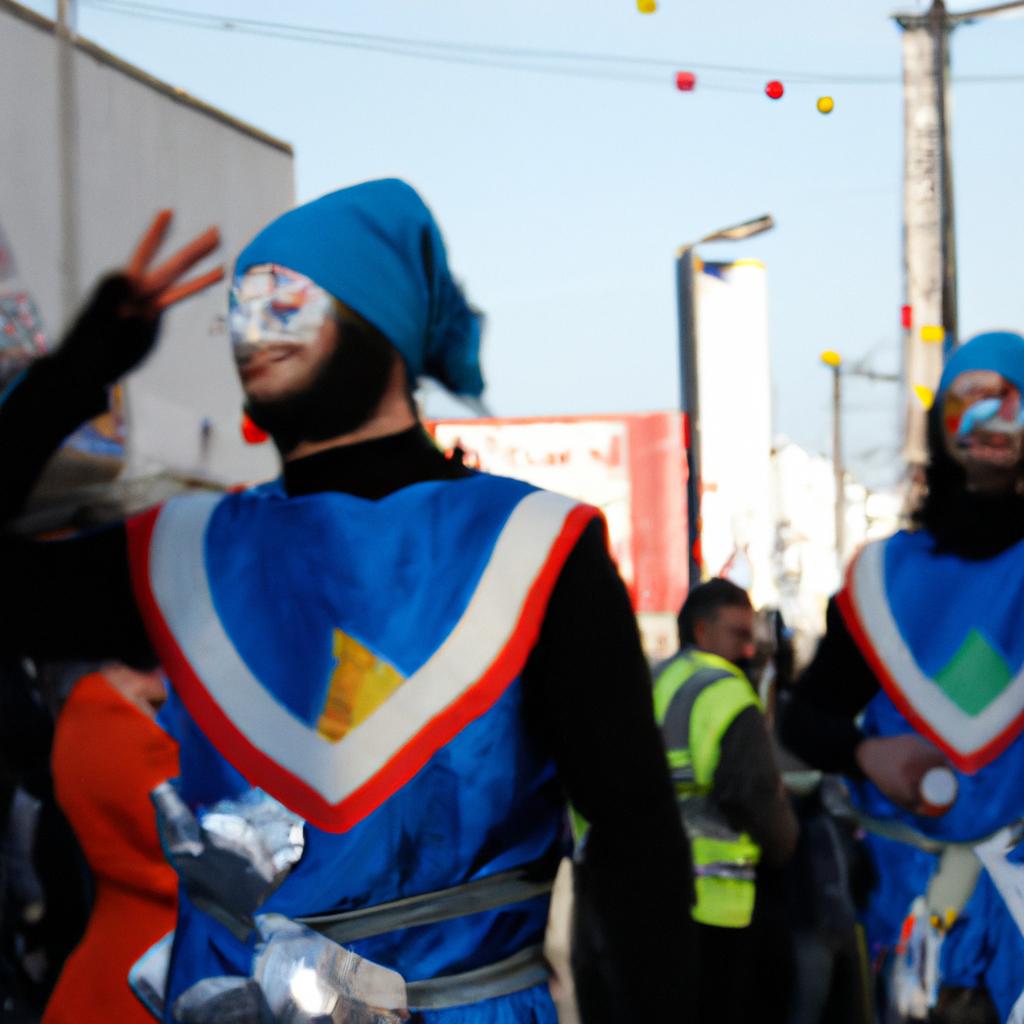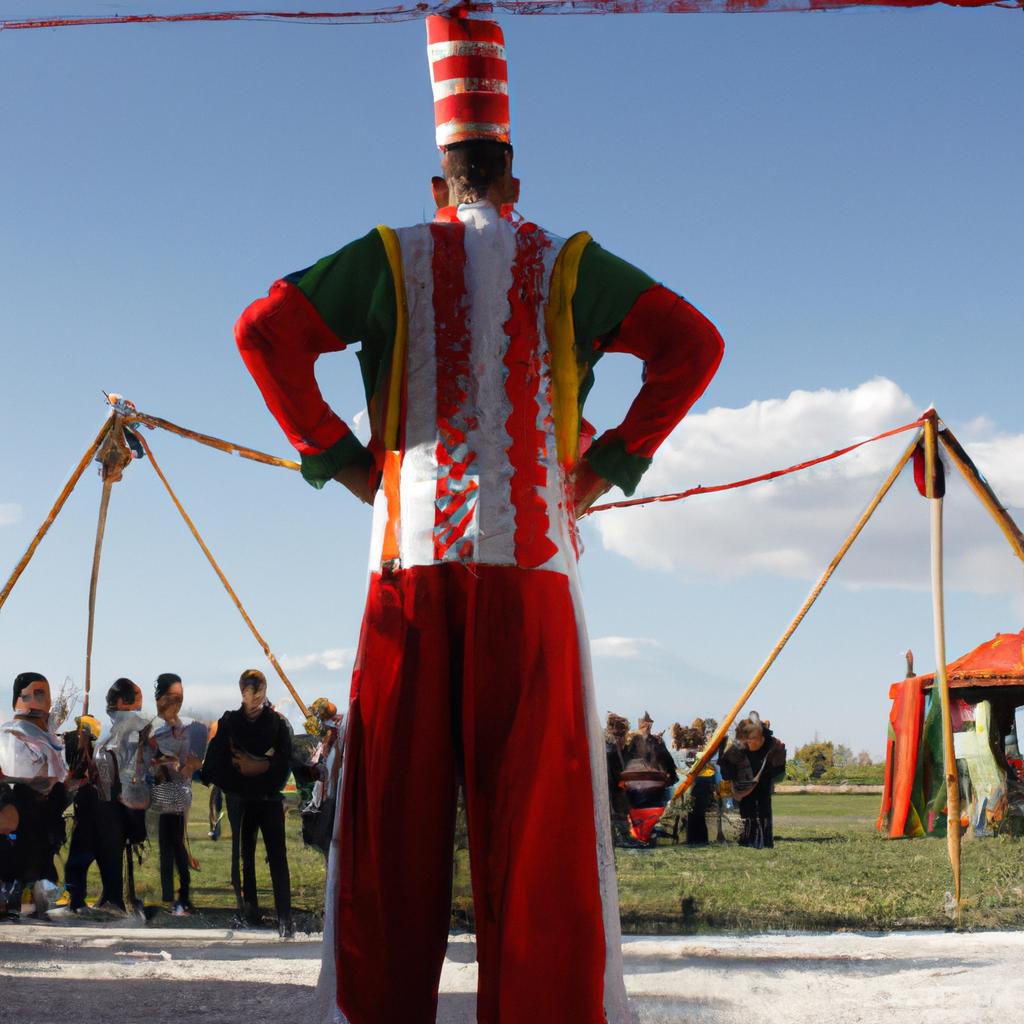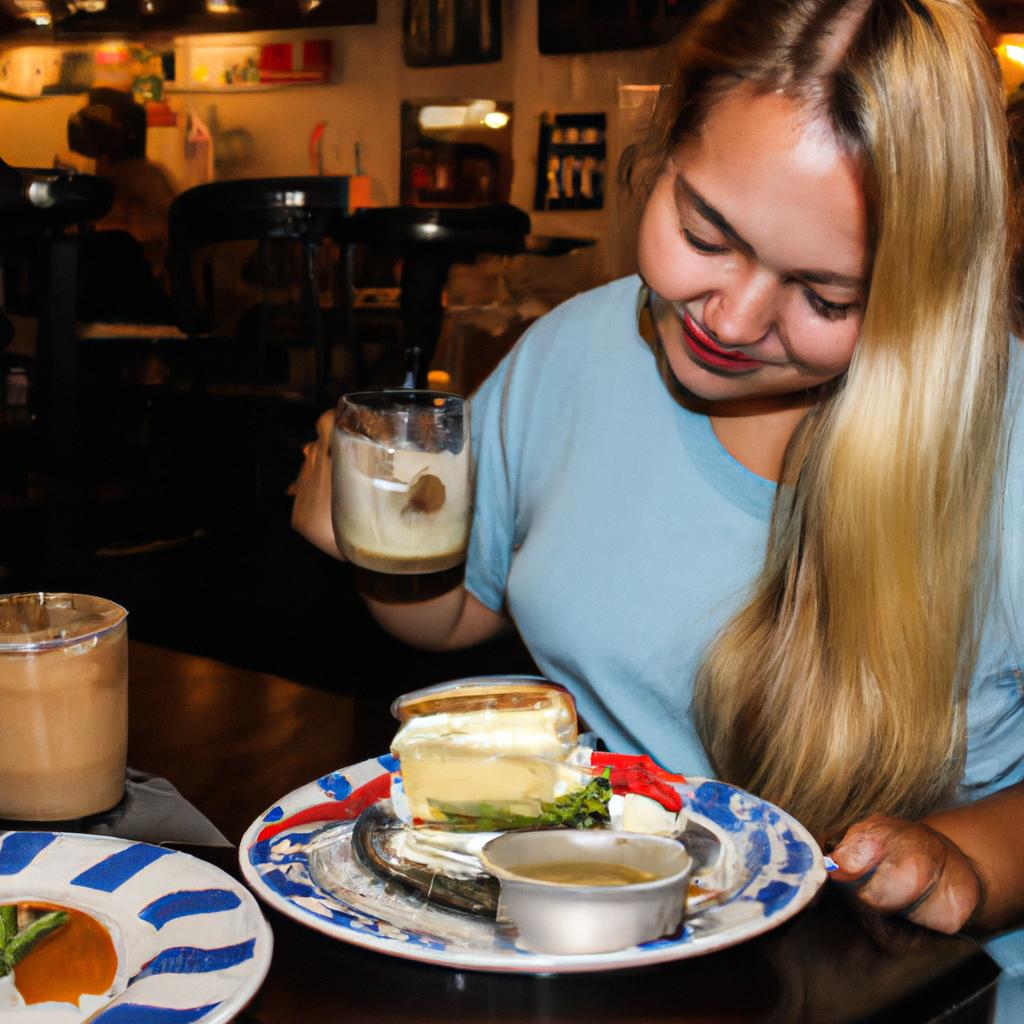Cultural Festivals: A Guide to Destinations Events.

Cultural festivals have become increasingly popular in recent years, attracting tourists from all corners of the globe. These events offer a unique opportunity to immerse oneself in the traditions and customs of different cultures, providing valuable insights into their history, art, music, and cuisine. For instance, the renowned Diwali Festival held annually in India showcases the vibrancy and diversity of Indian culture through its elaborate rituals, colorful decorations, and dazzling fireworks displays.
In this guide to destination cultural festivals, we will explore some of the most captivating events around the world that celebrate various aspects of human heritage. By examining these festivals’ significance within their respective communities and analyzing their impact on local economies and tourism industries, we aim to provide an insightful overview for travelers interested in experiencing cultural diversity firsthand. Additionally, we will delve into practical information such as festival dates, locations, and key attractions to help readers plan their itineraries effectively.
Festivals around the world
Festivals around the world offer a rich tapestry of cultural experiences that captivate and inspire people from all walks of life. From vibrant music festivals to elaborate religious ceremonies, these events showcase the diverse traditions, customs, and values of different cultures. One such example is the Rio Carnival in Brazil, where thousands of participants take to the streets in colorful costumes, dancing to infectious samba rhythms for days on end.
These celebrations serve as important platforms for communities to express their identity and heritage while fostering a sense of unity among its members. They often involve various artistic performances like dance, music, theater, and visual arts. Moreover, they provide an opportunity for individuals to learn about different cultures and broaden their horizons by embracing new perspectives.
To truly appreciate the significance and impact of cultural festivals worldwide, let us explore some common themes that are inherent in these events:
- Celebration: Festivals are occasions filled with joyous festivities where individuals come together to commemorate significant milestones or sacred rituals.
- Commemoration: Many festivals have historical or religious roots that honor past events or pay tribute to revered figures.
- Renewal: Some festivals mark the changing seasons or agricultural cycles and symbolize rejuvenation and hope.
- Identity: Cultural festivals play a vital role in strengthening community bonds by reinforcing shared values, beliefs, and traditions.
To further illustrate the diversity found within global cultural festivals, consider Table 1 below which showcases four distinct celebrations from different parts of the world:
| Festival | Location | Highlights |
|---|---|---|
| Diwali | India | Colorful lights, fireworks display |
| Oktoberfest | Germany | Traditional Bavarian beer festival |
| Holi | Nepal/India | Joyful color throwing celebration |
| Chinese New Year | China | Dragon dances, firecrackers |
As we delve into uncovering the history of cultural celebrations in the subsequent section, it becomes evident that these festivals are not merely random gatherings but rather deeply rooted traditions passed down through generations. The historical context and evolution of such events provide valuable insights into the societal changes and adaptations over time. By exploring their past, we can gain a deeper appreciation for the significance and enduring nature of these remarkable cultural expressions.
Now, let us transition to uncovering the history of cultural celebrations worldwide, where we will explore how these festivities have evolved and shaped societies throughout history.
Uncovering the history of cultural celebrations
Unveiling the Rich History of Cultural Celebrations
Imagine standing in a vibrant crowd, surrounded by people from different walks of life, all united to celebrate a shared heritage. This scene is often witnessed at cultural festivals around the world, where communities come together to honor their traditions and customs. These celebrations provide an opportunity for individuals to showcase their unique identities and preserve their cultural heritage.
One intriguing example of such a festival is the Carnival of Venice in Italy. Dating back to the 11th century, this annual event attracts tourists from far and wide who gather to witness the elaborate masks and costumes worn by participants. The carnival epitomizes the spirit of celebration as revelers indulge in music, dance, and street performances throughout its duration.
Cultural festivals have several significant impacts on both local communities and visitors alike:
- Foster cross-cultural understanding: Festivals create spaces where diverse cultures can interact with one another. Through experiencing different customs, languages, cuisines, and art forms, attendees gain a deeper appreciation for various cultural practices.
- Strengthen community bonds: These events serve as platforms for locals to strengthen social connections within their own communities. It provides an occasion for residents to unite under a common cause or belief system while reinforcing communal ties.
- Boost tourism and economic growth: Cultural festivals often attract large numbers of tourists seeking immersive experiences that go beyond traditional sightseeing. As a result, these events contribute significantly to local economies through increased spending on accommodations, food, souvenirs, and other related services.
- Preserve intangible heritage: Many festivals play an essential role in safeguarding intangible aspects of culture such as rituals, dances, songs, and stories that might otherwise fade away over time. By actively engaging younger generations in these festivities, cultural knowledge is passed down through generations.
To further illustrate the significance of cultural celebrations worldwide, consider Table 1 below which highlights some well-known festivals along with their respective countries:
| Festival | Country | Description |
|---|---|---|
| Diwali | India | Celebrates the victory of light over darkness. |
| Oktoberfest | Germany | A festival dedicated to beer and Bavarian culture. |
| Hanami | Japan | Honors the arrival of spring with cherry blossom viewings. |
| Holi | Nepal | Involves colorful powder-throwing festivities. |
As cultural festivals continue to captivate audiences worldwide, they offer a glimpse into various aspects of human creativity, tradition, and heritage. The next section will delve into the integral role that music and dance play in these celebrations, further enriching our understanding of their significance.
Exploring the rhythmic beats and captivating movements at cultural festivals opens up another dimension of these vibrant events.
Music and dance at cultural festivals
As we delve deeper into the world of cultural festivals, it is important to understand the rich historical background behind these vibrant celebrations. By examining their origins and evolution, we can gain a greater appreciation for the traditions that continue to shape our diverse global community.
One fascinating example that highlights the significance of cultural festivities is India’s Holi Festival. Originating from ancient Hindu mythology, this festival commemorates the arrival of spring and signifies the triumph of good over evil. Participants engage in exuberant color throwing, symbolizing unity and joy amidst diversity. The roots of Holi date back centuries, showcasing how cultural celebrations can endure through generations while adapting to contemporary contexts.
To further explore the multifaceted nature of cultural festivals, let us consider several key aspects:
- Historical Significance: Cultural festivals often have deep-rooted connections with historical events or religious beliefs. They serve as reminders of past struggles or victories and provide a platform for communities to honor their heritage.
- Symbolism: Many cultural festivals utilize symbols and rituals to convey specific meanings. These symbolic practices create an immersive experience for participants and offer glimpses into other cultures’ customs and values.
- Social Cohesion: Festivals foster social cohesion by bringing people together in celebration regardless of age, gender, or socio-economic backgrounds. They promote inclusivity and strengthen communal bonds within societies.
- Economic Impact: Cultural festivals have significant economic implications as they attract tourists, generate revenue for local businesses, and contribute to the overall growth of host destinations.
The table below showcases examples of notable cultural festivals from around the world:
| Festival | Country | Theme |
|---|---|---|
| Diwali | India | Triumph of light over darkness |
| Carnival | Brazil | Celebration before Lent |
| Oktoberfest | Germany | Traditional Bavarian culture |
| Songkran | Thailand | Thai New Year Water Festival |
In conclusion, exploring the history of cultural celebrations unveils a tapestry of diverse traditions and customs that have withstood the test of time. These festivals not only provide entertainment but also serve as windows into different cultures, fostering understanding and appreciation among communities worldwide. In our next section about “Unique traditions and customs,” we will delve deeper into the specific rituals and practices that make each festival an extraordinary experience.
Now let’s transition to the subsequent section:
Moving from the historical foundations of cultural celebrations, we now turn our attention to explore the unique traditions and customs that define these remarkable festivities.
Unique traditions and customs
In addition to the vibrant music and dance performances, cultural festivals are often characterized by their unique traditions and customs. These rituals bring a sense of identity and heritage to the event, allowing visitors to experience the depth of cultural diversity. One such example is the Lantern Festival celebrated in Taiwan every year.
During the Lantern Festival, thousands of intricately designed lanterns fill the night sky, creating a mesmerizing spectacle. This tradition dates back centuries and holds significant meaning for Taiwanese people. It symbolizes letting go of past grudges or bad luck while embracing new beginnings and good fortune. The festival also features a variety of activities such as solving riddles written on lanterns, lion dances, and street performances that further enhance the festive atmosphere.
To give you an insight into some fascinating traditions experienced at cultural festivals worldwide, consider the following:
- In Spain’s La Tomatina festival, participants engage in a massive tomato fight where tons of ripe tomatoes are thrown at each other.
- In India’s Holi festival, people joyously throw colored powders at one another to celebrate love and unity.
- Japan’s Hanami festival celebrates the arrival of spring with cherry blossom viewing parties under blooming trees.
- Brazil’s Carnival showcases elaborate parades filled with flamboyant costumes, samba dancing, and energetic music.
These unique customs not only provide entertainment but also foster communal spirit and create lasting memories for both locals and tourists alike.
Table: Cultural Festivals Around the World
| Country | Festival | Description |
|---|---|---|
| Spain | La Tomatina | Massive tomato throwing extravaganza |
| India | Holi | Colorful powder celebration |
| Japan | Hanami | Cherry blossom viewing parties |
| Brazil | Carnival | Flamboyant parades & samba dancing |
As we delve deeper into the world of cultural festivals, it becomes evident that these events offer much more than just music and dance performances. The rich traditions and customs associated with them provide a glimpse into the history and values of different cultures. By participating in these unique practices, visitors can gain a deeper appreciation for the diversity that exists across the globe.
As we explore further aspects of cultural festivals, let us now turn our attention to another sensory delight – food and culinary delights.
Food and culinary delights
Continuing our exploration of cultural festivals, we now turn our attention to the mouthwatering realm of food and culinary delights. Immersing oneself in the flavors and aromas of traditional cuisine is an integral part of experiencing these vibrant celebrations. Let us delve into this delectable aspect, using the example of the Mid-Autumn Festival celebrated in China.
Paragraph 1:
At the heart of any cultural festival lies its unique gastronomic offerings that reflect centuries-old traditions and local ingredients. During the Mid-Autumn Festival, families gather to celebrate unity and abundance while indulging in mooncakes—a delicacy synonymous with this event. These round pastries symbolize fullness and harmony, typically filled with lotus seed paste or red bean paste, often adorned with intricate designs on their golden-brown crusts. The consumption of mooncakes brings people together as they exchange wishes for good fortune under the luminous glow of a full moon.
- Taste authentic street foods like takoyaki from Japan’s Matsuri Festival.
- Savor aromatic spices used in Indian curries during Diwali.
- Sample traditional sweets such as alfajores at Argentina’s National Day celebrations.
- Explore regional specialties like paella at Spain’s La Tomatina festival.
| Country | Cultural Festival | Traditional Dish |
|---|---|---|
| Japan | Matsuri Festival | Takoyaki |
| India | Diwali | Curry |
| Argentina | National Day | Alfajores |
| Spain | La Tomatina | Paella |
Paragraph 2:
These culinary experiences not only tantalize taste buds but also provide insight into a community’s history, culture, and values. They offer glimpses into ancestral cooking techniques passed down through generations and highlight the significance of certain ingredients. For example, in Spain’s La Tomatina festival, participants engage in a massive tomato fight that pays homage to the region’s abundant tomato harvest and fosters a sense of camaraderie among locals and visitors alike.
Paragraph 3:
By fully immersing ourselves in these culinary delights, we forge connections with the rich tapestry of human experience represented at cultural festivals worldwide. From indulging in traditional dishes to understanding the stories behind them, this aspect allows us to appreciate the role food plays in shaping cultural identity. As we transition into our next section on “Tips for attending cultural festivals,” let us carry forward this newfound appreciation as we embark on our journey through these captivating celebrations.
Tips for attending cultural festivals
Section: Tips for making the most of cultural festivals
Transitioning from the previous section on food and culinary delights, let us now explore some valuable tips that can enhance your experience when attending cultural festivals. To illustrate these tips, let’s consider the hypothetical scenario of a traveler named Sarah who is planning to attend a vibrant cultural festival in India.
-
Plan ahead: Before embarking on her journey, Sarah does thorough research about the festival she will be attending. She studies its history, significance, and unique traditions to gain a deeper understanding of what to expect. By planning ahead, Sarah ensures she doesn’t miss out on any important activities or performances during the festival.
-
Immerse yourself: One way Sarah immerses herself into the festival atmosphere is by participating in interactive workshops or demonstrations offered at various stalls within the festival grounds. These hands-on experiences allow her to learn traditional crafts, dances, or music directly from local artisans/artists, fostering a greater appreciation for their culture.
-
Engage with locals: Sarah understands that engaging with locals can provide meaningful insights into the festival’s customs and traditions. She actively seeks opportunities to interact with residents of the host community through friendly conversations or by asking questions during guided tours. This not only enriches her knowledge but also creates connections that may lead to long-lasting memories.
-
Respect cultural norms: While indulging in new experiences, it is crucial for Sarah to respect the cultural norms and values upheld by the local community hosting the festival. She dresses modestly (where appropriate) and behaves respectfully towards religious ceremonies or sacred sites visited during festivities.
To further emphasize these tips, refer to the following table showcasing how each tip contributes positively to one’s overall cultural festival experience:
| Tips | Emotional Response |
|---|---|
| Plan ahead | Ensures anticipation |
| Immerse yourself | Fosters appreciation |
| Engage with locals | Cultivates connection |
| Respect cultural norms | Promotes harmony |
In conclusion, by following these tips, festival-goers like Sarah can maximize their enjoyment and gain a deeper understanding of different cultures. Remember that each festival offers unique opportunities for exploration and discovery; thus, embracing the spirit of adventure is key to making the most out of your cultural festival experience.
(Note: The table above may not be correctly formatted in plain text format. Please refer to the Markdown version for proper visualization.)





